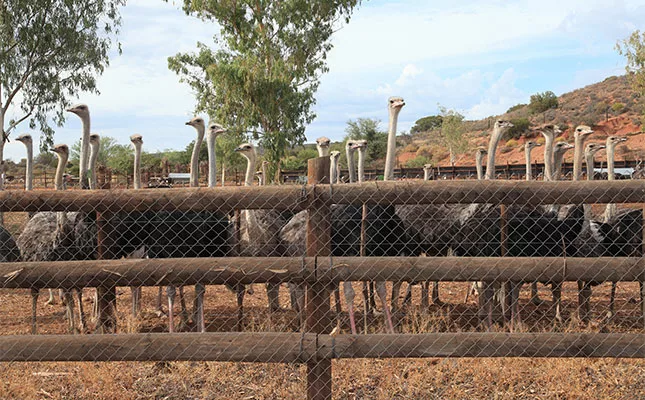Avian influenza, commonly known as bird flu, is often thought of as a modern crisis, yet history shows that poultry farmers have battled its effects for generations. In the late 1800s, outbreaks were described by the symptoms farmers observed: “fowl plague” in chickens in 1878 and “green urine” in ostriches in 1881. Today, science has identified the culprit—highly pathogenic avian influenza (HPAI) strains such as H5N1, which continue to pose serious risks to poultry, wild birds, and increasingly, mammals.
Also Read: Agrico Scales Up: Introducing Southern Africa’s Largest PVC Pipes
According to the US Centers for Disease Control and Prevention (CDC), the H5N1 virus was first identified in 1996 in geese in China’s Guangdong province. That initial outbreak killed nearly 40% of affected birds. The global spotlight fell on the disease the following year, when the virus spread to Hong Kong’s live-poultry markets, infecting eight people and killing six. Since then, more than 860 human cases have been confirmed worldwide, with a fatality rate exceeding 50%.
By the early 2000s, H5N1 had spread widely across Asia, thriving in live-bird markets and smallholder farms where close contact between species created fertile ground for transmission. In 2005, a mass die-off of wild birds at Qinghai Lake in China demonstrated the role migratory species play in carrying the virus across continents. From there, H5N1 moved through Europe, the Middle East, and Africa, where it continues to evolve into new genetic groups, or clades.
Over the past two decades, H5N1 has expanded its host range, occasionally infecting carnivorous mammals that fed on infected birds. While these infections rarely resulted in further spread, the virus has shown more worrying signs in recent years. Large outbreaks among sea lions and seals in the Americas suggested the potential for mammal-to-mammal transmission. In 2024, the situation escalated further when H5N1 was confirmed in US dairy cattle—the first time avian influenza spread widely in livestock. Although cattle fatalities were low, the outbreak disrupted milk production and led to secondary infections in farmworkers, pets, and wild animals exposed to contaminated raw milk. Crucially, scientists confirmed cow-to-cow transmission, marking a troubling new chapter in the virus’s evolution.
In South Africa, ostriches have faced repeated battles with avian influenza. The first documented case occurred in 1991, when the low-pathogenic H7N1 strain struck the Western Cape. Mortality rates reached 80% in young chicks and up to 60% in older birds. HPAI was first confirmed in ostriches in 2004, forcing the culling of more than 30 000 birds and halting exports. Subsequent outbreaks devastated the industry, reshaping income streams and pushing farmers to shift focus from meat to feathers and leather. According to Dr Adriaan Olivier of the South African Ostrich Business Chamber, one silver lining has been the widespread adoption of stricter biosecurity. Improved hygiene, water disinfection, and careful sourcing of disease-free stock have all strengthened the sector against future threats.
The commercial chicken industry has also suffered major losses. South Africa’s first confirmed HPAI outbreak in chickens occurred in 2017 with the H5N8 strain, leading to the culling of 5,4 million birds and losses estimated at R1,66 billion. Further outbreaks in 2021 and 2023 claimed millions more and caused billions of rand in damages, while the virus spilled over into wild bird populations, affecting species such as pelicans, gulls, cormorants, and even penguins. Prof Celia Abolnik of the University of Pretoria notes that more than 80% of poultry infections originate from wild birds, underscoring the importance of ongoing surveillance.

After years of destruction, South Africa is preparing to roll out vaccination against avian influenza. Poultry giant Astral Foods has already gained approval to vaccinate breeder flocks, and industry leaders are in talks with government to expand access. Experts caution, however, that vaccines are not a cure-all. While they can reduce symptoms, mortalities, and virus shedding, strict biosecurity and monitoring will remain essential. “Where countries once opposed vaccination, trade disruptions and mass losses are now forcing everyone to rethink,” says Olivier.
The battle against avian influenza is far from over. The virus’s ability to adapt, spread across species, and cause severe economic damage makes it one of the most persistent challenges facing global agriculture. While vaccines and improved biosecurity provide hope, the risk of further mammalian transmission raises new concerns about potential human adaptation. For now, vigilance, science-based strategies, and international cooperation remain the best tools in this ongoing fight.
For more information, contact Dr Adriaan Olivier at saobcvet@saobc.co.za or Prof Celia Abolnik at celia.abolnik@up.ac.za.